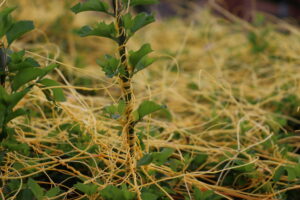Their legacy, interwoven with the threads of ecological sustainability, serves as a beacon of hope and responsibility for future generations.
In the heart of Africa, where the sun-kissed hills of Uganda cradle the banks of Lake Victoria, a story of faith and sacrifice has transcended generations. The Uganda Martyrs, a group of young Christians who stood firm in their beliefs against the tyrannical rule of King Mwanga II in the late 19th century, are revered not just for their unwavering faith but also for their deep connection to the land and its resources. Their legacy, interwoven with the threads of ecological sustainability, serves as a beacon of hope and responsibility for future generations.
The story begins in the vibrant Kingdom of Buganda, where lush greenery, diverse wildlife, and fertile soils flourished. The Martyrs were not only devoted followers of Christianity; they were also stewards of their land. They understood the intricate balance between nature and spirituality, recognizing that their faith was intrinsically tied to the environment that nurtured them. They planted trees, tended to gardens, and practiced sustainable farming, ensuring that their community thrived while respecting the earth.
As the missionaries introduced Christianity to the region, the Martyrs embraced the teachings that emphasized love, respect, and stewardship of creation. They learned that God’s creation was not merely a resource to be exploited but a sacred trust to be cared for. This understanding deepened their commitment to ecological sustainability, aligning their faith with the rhythms of nature.
However, as King Mwanga II sought to assert his power, he saw the growing influence of Christianity as a threat. The Martyrs faced an agonizing choice: to abandon their faith and conform to the king’s demands or to stand firm in their beliefs, risking their lives. They chose courage over fear. Their martyrdom not only marked a pivotal moment in Uganda’s history but also ignited a flame of ecological consciousness that would burn brightly for generations to come.
In the wake of their sacrifice, the Ugandan landscape began to change. The communities inspired by the Martyrs’ bravery rallied together to honor their legacy by advocating for the protection of the environment and the totems they treasured. They planted trees in their memory, creating lush forests that served as sanctuaries for wildlife and a source of sustenance for the people. The Martyrs’ story became a catalyst for the conservation movement, reminding the populace that their faith called them to protect the earth.
Today, as Uganda grapples with the challenges of deforestation, climate change, and habitat loss, the spirit of the Martyrs lives our hearts as Laudato Youth. We now strive to teach Schools young people about the importance of caring for the environment, drawing parallels between the sacrifice of the Martyrs and the responsibility to safeguard the planet. Our Parish/Diocese and Community ecological programs to restore degraded lands, promote sustainable agriculture, and protect biodiversity, are all inspired by our steadfastness and love of the Martyrs for sacrifice. Their blood is a seed of faith and hope for our Country and the rest of Africa.

In the rural villages, families gather to share stories of the Uganda Martyrs, not only as martyrs of faith but as champions of ecological sustainability to mention St. Adolf Mukasa Rudigo the Patron of farmers and herdsmen. The elder’s telltale stories of how these young men, in their quest for truth, taught the importance of living in harmony with nature. Elders encourage the youth to honor the earth by practicing traditional farming methods, preserving indigenous plants, and cultivating biodiversity.
As the sun sets over the rolling hills of Uganda, casting a golden hue across the landscape, the legacy of the Uganda Martyrs resonates in the whispers of the wind and the rustling leaves. Their story is a poignant reminder that faith and ecological sustainability are intertwined, urging each person to take up the mantle of stewardship in their daily lives.
In our African perspective, the Uganda Martyrs are not just historical figures; they are green martyrs, inspiring an initiatives like Laudato Youth that recognizes the sacredness of creation. Their life and sacrifice challenge us to reflect on our relationship with the environment, inspiring us to act with love and respect towards the earth, ensuring that future generations inherit a thriving, sustainable world.
In the footsteps of the Uganda Martyrs, may we all become stewards of creation, embracing the call to protect our planet with the same fervor they showed in their faith this jubilee year as pilgrims of green hope.
Immaculate Kisembo
Teacher of English Language at HCLV
Laudato Youth Initiative Publications Editor














